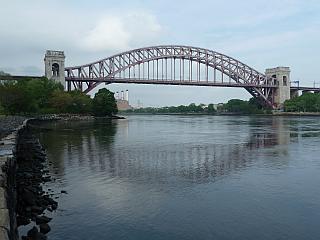Winter officially starts five days from now. Until this last week you'd have never known it. Only a week ago I spend most of Sunday afternoon at the Sydney Cricket Ground (SCG) watching a football game and soaking up the sunshine in a short-sleeved shirt. However, the weather took a turn for the worse on Wednesday as a cold front brought rain, wind and rather cool temperatures. Daytime temperatures dropped as low as 14°C and fell to 10°C overnight (much like an English Spring). I even turned on the central heating in the evening for several hours; the first I've felt such a need to since returning to Australia.
Today, after three days of inclement weather, we've woken to blue skies and dazzling sunshine. The view from our balcony is simply sublime (see above). It's been made all the more inspiring thanks to Garry's hard work. He took it upon himself to sand and re-stain the weathered teak bench on our balcony while I was in New York. He's done a brilliant job, returning the grey lifeless wood to its former glory. We now have another cosy spot to sit, enjoy the view and contemplate life.
Sadly, the sunshine is forecast to disappear as another week of rain is on its way. I'm not sure whether to laugh or cry. After two unusually cold winters in London we've returned to Sydney just in time to enjoy the city's wettest Autumn for more than 20 years. March was particularly damp. On March 19 alone, Sydney recorded its heaviest 24-hour period of rain for more than 27 years when 99mm fell. April then proved no better. The city received 206.2 mm of rain during the month, well above the historical average of 125.8 mm, making it the wettest April since 1999.
UPDATE: May 30
I read today that weather watchers are pedicting that May 2011 will be declared Sydney's coldest May for more than 40 years thanks to overnight temperatures falling well below their seasonal average.
Today, after three days of inclement weather, we've woken to blue skies and dazzling sunshine. The view from our balcony is simply sublime (see above). It's been made all the more inspiring thanks to Garry's hard work. He took it upon himself to sand and re-stain the weathered teak bench on our balcony while I was in New York. He's done a brilliant job, returning the grey lifeless wood to its former glory. We now have another cosy spot to sit, enjoy the view and contemplate life.
Sadly, the sunshine is forecast to disappear as another week of rain is on its way. I'm not sure whether to laugh or cry. After two unusually cold winters in London we've returned to Sydney just in time to enjoy the city's wettest Autumn for more than 20 years. March was particularly damp. On March 19 alone, Sydney recorded its heaviest 24-hour period of rain for more than 27 years when 99mm fell. April then proved no better. The city received 206.2 mm of rain during the month, well above the historical average of 125.8 mm, making it the wettest April since 1999.
UPDATE: May 30
I read today that weather watchers are pedicting that May 2011 will be declared Sydney's coldest May for more than 40 years thanks to overnight temperatures falling well below their seasonal average.















































